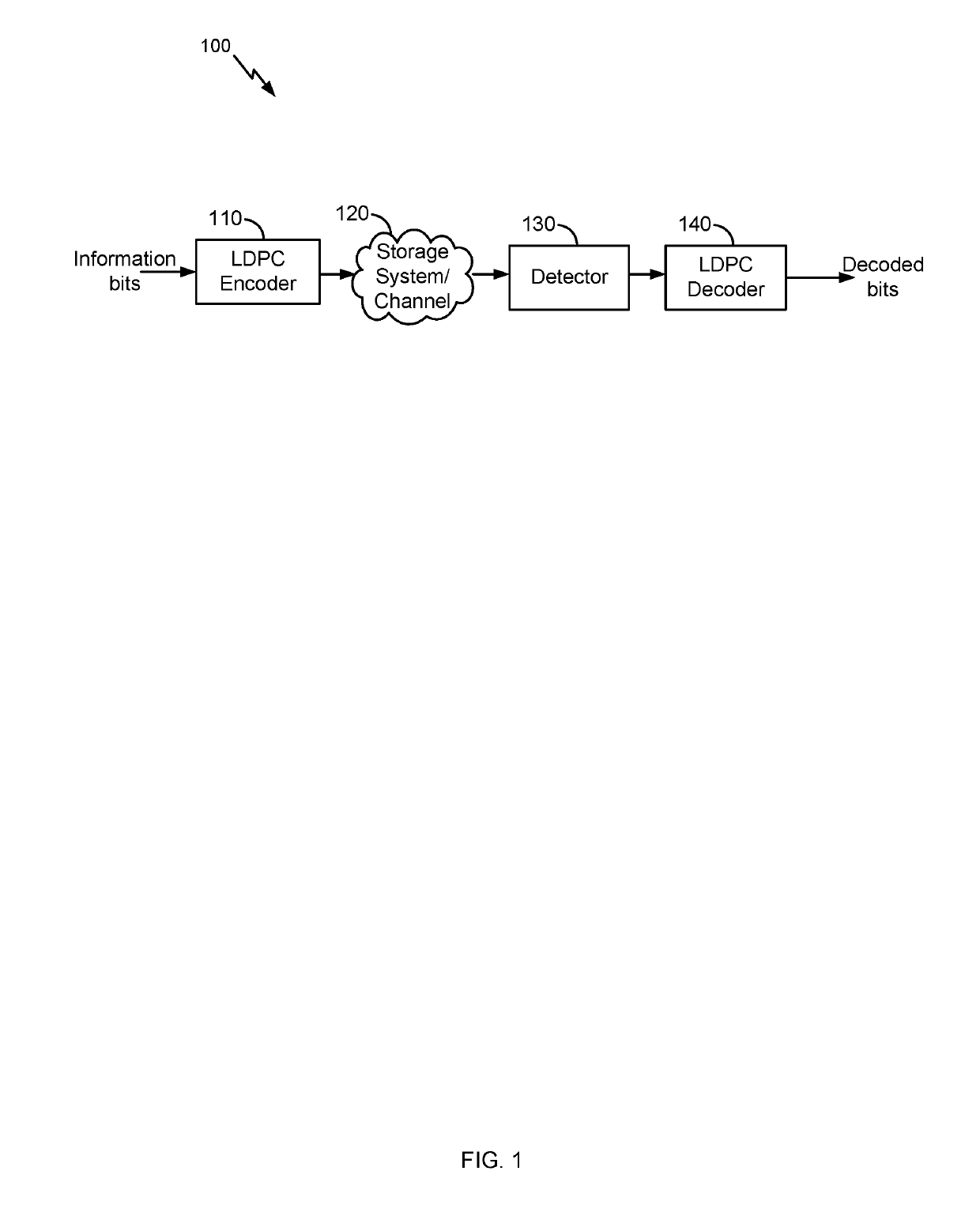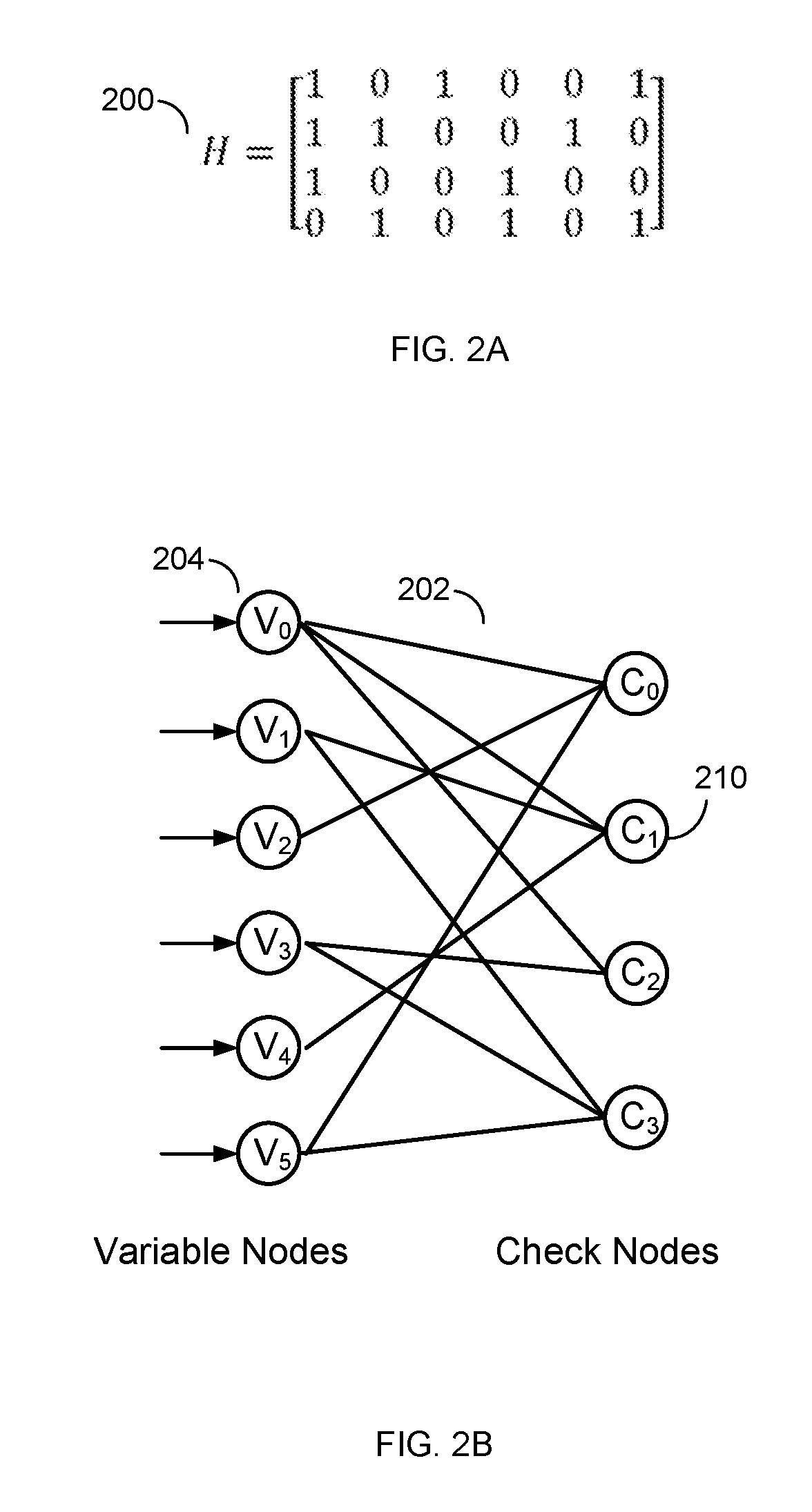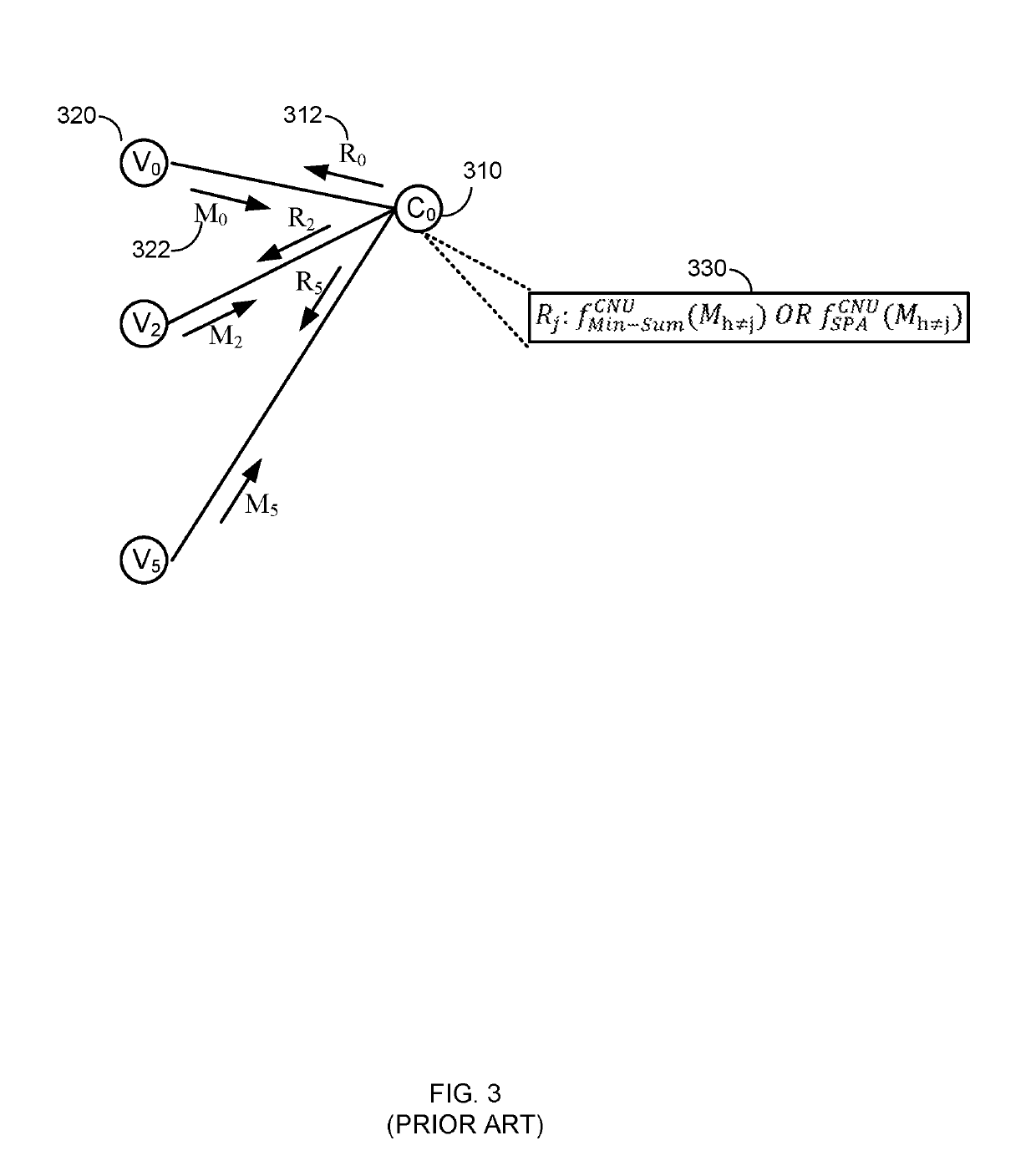Min-sum decoding for LDPC codes
a technology of ldpc codes and minsums, applied in the field of minsum decoding for ldpc codes, can solve the problems of low implementation cost of ms decoders, prohibitive implementation cost of spa, and time-consuming iterative decoding, etc., to achieve the effect of improving performance, reducing implementation cost, and reducing code failure ra
- Summary
- Abstract
- Description
- Claims
- Application Information
AI Technical Summary
Benefits of technology
Problems solved by technology
Method used
Image
Examples
Embodiment Construction
[0017]Embodiments of the present disclosure involve improving the performance (e.g., bit error rate, code failure rate, etc.) of LDPC decoding relative to min-sum (MS) decoding, while reducing the implementation cost (e.g., circuit area, power consumption, processing cycles, latency, etc.) relative to sum-product algorithm (SPA) decoding are described. In other words, whereas existing solutions implement MS decoding or SPA decoding given a tradeoff between the performance and implementation cost, embodiments herein avoid such a tradeoff. Instead, the best of both decoding approaches becomes possible: an improved performance at a low cost implementation. This translates into an LDPC decoding system that has a small circuit area, a low power consumption, less processing cycles, a short latency similar to an MS decoder while achieving a bit error rate and a code failure rate similar to an SPA decoder.
[0018]In an example, the LDPC decoding system implements a modified MS decoding approa...
PUM
 Login to View More
Login to View More Abstract
Description
Claims
Application Information
 Login to View More
Login to View More - R&D
- Intellectual Property
- Life Sciences
- Materials
- Tech Scout
- Unparalleled Data Quality
- Higher Quality Content
- 60% Fewer Hallucinations
Browse by: Latest US Patents, China's latest patents, Technical Efficacy Thesaurus, Application Domain, Technology Topic, Popular Technical Reports.
© 2025 PatSnap. All rights reserved.Legal|Privacy policy|Modern Slavery Act Transparency Statement|Sitemap|About US| Contact US: help@patsnap.com



